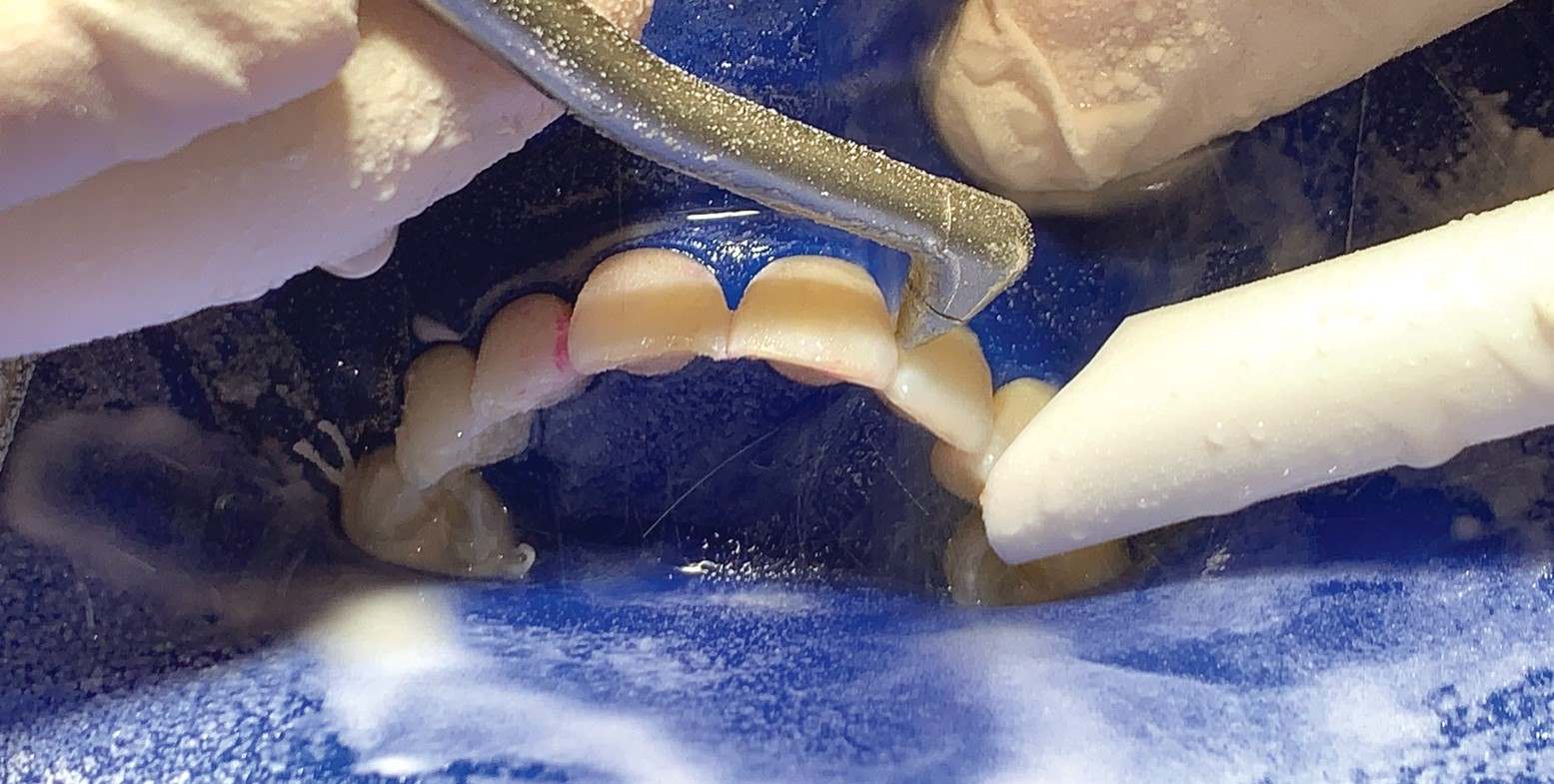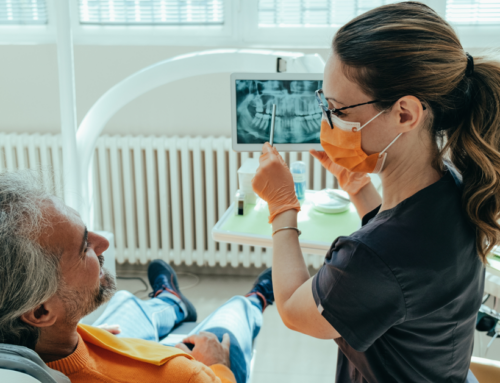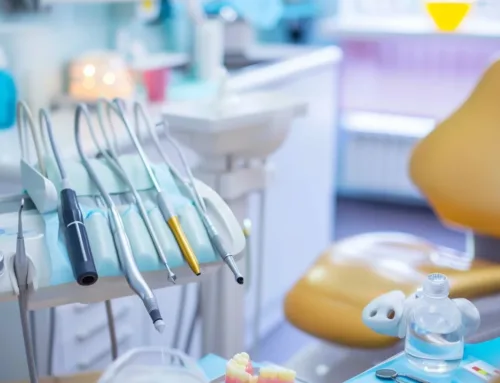Using Air Abrasion Dental Tools for Gentler Cavity Treatments
Finding out you have a cavity in one of your teeth is never great news. Fortunately, fixing minor instances of tooth decay is easier for the patient than ever these days thanks to the innovation of new dental procedures, tools, and techniques. In the case of cavities, many dentists are now utilizing air abrasion tools to help repair damaged teeth and restore the patient’s mouth back to good health. Let’s explore how air abrasion tools are used in dental care, and what advantages they provide.
The sound of a dentist drill is one of those common stereotypes that inevitably springs to mind when we hear the word ‘cavity’. For many people, the idea of this causes feelings of anxiety, but the field of dentistry has made great strides over the years to provide gentler, more comfortable treatment experiences for patients across a diverse range of procedures. When it comes to repairing the damage of tooth decay, a dentist drill is no longer the only method available. In dental clinics around the world, new air abrasion tools are being leveraged as part of their approach to repairing cavities and treating tooth decay.
What Are Cavities & How Do Cavities Form In Teeth?
To understand how cavities are treated, it first necessary to know why they form in the first place, and how they can be prevented. In simplest terms, cavities are holes that form in the hard enamel of the teeth. The natural state of the mouth is just slightly acidic on the pH scale, but in general it can be considered neutral. However, ingesting food and drink causes the production of saliva to increase and the digestive processes to begin, lowering the overall pH and creating a more acidic environment that has a de-mineralizing effect on the teeth. These acids cause the tooth enamel to gradually erode, weakening it if left unchecked.
Furthermore, the accumulation of bacteria on the teeth and around the gums in the form of plaque works to accelerate the decay of tooth enamel. The by-products of bacterial reproduction also generate acidity in the mouth, increasing the speed at which tooth enamel can become damaged and thinner. As the enamel loses its strength, holes can form where the acidity and bacteria can begin to affect the inner dentin material of the tooth. When this happens, the person can experience increased pain, discomfort and swelling around the tooth, as well as face a higher risk of infections in the teeth and gums.
Brushing the teeth properly, flossing regularly, and using an antibacterial oral rinse work to remove plaque build-up from around the teeth, while the fluoride in toothpaste helps to strengthen the enamel by re-mineralizing it. Sticking to the recommended schedule of two to three times daily is often sufficient at staving off cavities for most people, but patients also must bolster their oral care efforts with regular dental checkups and hygiene treatments.
Professional tooth cleaning treatments performed by a dental hygienist will clear away plaque that has become hardened into tartar, and clean deep under the gum line and surrounding pockets around the teeth. The teeth will also be polished and have a fluoride treatment applied to further strengthen the enamel and reinforce the ability of the teeth to ward off tooth decay. During your dental checkup, your dentist will look closely for any signs of tooth decay or early stage cavity development. X-rays are also important as they will highlight potential trouble spots in between the teeth and under the gum line where they may be difficult to see with the unaided eye.
In the event that any cavities or tooth decay is detected, the dentist will then plan an appropriate repair procedure to restore the tooth back to good health and prevent further complications from developing. This is very important, as the potential dangers of leaving a decaying tooth untreated can be quite severe.
Why Do Cavities Need to Be Repaired?
If left unchecked, tooth decay can rapidly progress towards other much more serious dental health conditions. Decaying teeth can easily become infected if the bacterial growth progresses to the inner pulp of the tooth where the nerves are, causing pain, swelling and a great deal of discomfort. Infections can also advance into the gum tissue itself, resulting in gum disease, also known as periodontitis. Gum disease and infections with the teeth are critical health problems that must be treated promptly. In many cases, advanced stages of tooth decay can require extractions. Sometimes this might mean the removal of just the single infected tooth, but if the infection has spread, it may mean multiple teeth need to be removed.
Missing teeth lead to other health problems as well. Difficulty chewing can make proper nutrition challenging, resulting in a decline in overall well-being. The absence of teeth also causes a gradual loss of density in the jawbones, gradually weakening the bones and increasing their fragility. Furthermore, missing teeth can make a person very self-conscious about their appearance, reducing their eagerness to participate in social gatherings and having a negative impact on their sense of confidence. For these reasons and more, preventing tooth decay and treating cavities as early as possible is essential to maintaining a good state of health and well-being.
Once a cavity or early sign of tooth decay is spotted, your dentist will likely proceed to treat the area with a filling to repair the damage and restore the integrity of the tooth. To begin, the dentist will ensure the area with the cavity is clean and free of tartar and plaque before moving to the stage where the tooth is prepared to accept the filling. Once ready, the decayed portion of the tooth will be removed. While traditionally this is done using a mechanical dentist drill, dentists can now use an air abrasion device to prepare minor cavities and areas of tooth decay for repair and restoration.
What’s the Difference Between Dentist Drills & Air Abrasion Dental Tools?
Dentist drills function the same way as other types of mechanical drills, just on a much smaller scale. Using a metal drill tip that spins at a very high speed, the dentist carefully moves the tip into the damaged area of the tooth to grind away the decay and provide a surface of healthy tooth material to which the filling can bond. This grinding action creates vibrations into the tooth and down into the jawbone, which can be uncomfortable or possibly painful, depending on the depth of drilling needed and the health of the surrounding teeth and jaw. Because of this, in most cases of drilling to repair a cavity, the dentist will provide freezing or anesthetic to the area to make the patient comfortable during the procedure.
Air abrasion dentist tools, on the other hand, do not use spinning drill tips to grind away the decayed tooth material. Instead, a stream of very tiny abrasive particles is sprayed at a very high speed onto the damaged area of the tooth. These fast-moving particles produce an eroding effect on the tooth material, removing the decay without producing intense vibrations or grinding sensations. As the spraying process remove the decayed tooth area, the abrasive particles and the eroded tooth material are continually suctioned away.
What Are the Advantages of Air Abrasion in Fixing Cavities?
Many dentists prefer air abrasion for cavity preparation for several reasons. First, it is far more gentle on the patient, and reduces the need for dental anesthetic or freezing. While not entirely pain-free for all patients, as the air abrasion process can produce some discomfort in sensitive teeth or areas of the gums, most people find a light numbing topical anesthetic or low level of freezing to be sufficient to provide a comfortable experience. This means less time waiting for the freezing to wear off and fewer side effects from anesthetics.
Air abrasion also has the advantage of leaving a greater portion of healthy tooth material in the area, providing a strong base for the repair to adhere to, and less likelihood of chips or cracks developing in the hard outer enamel of the tooth over the long-term. In some situations, air abrasion can also be used to quickly and effectively prepare teeth to receive porcelain veneers and protective dental sealants.
Can Air Abrasion Be Used to Treat All Patients & Types of Cavities?
Dental care using air abrasion tools provides the patient with enhanced comfort, however it cannot be used in all cases. In situations where the decay has progressed deeply into the tooth, air abrasion may not be the ideal solution to provide the optimum outcome. It also cannot be performed on cavities that are forming in between the teeth, as the tools cannot be properly maneuvered in such tight spaces. Most often, air abrasion is used to repair dental cavities that are smaller in size and shallower in depth, and are located on the outer or inner surfaces of the teeth where they can be accessed without any obstruction.
Learn More About Cavity Repair Using Air Abrasion Tools & Book Your Next Appointment
If it’s been a while since your last dental checkup, there’s no time to waste! Contact the team here at Georgian Dental to arrange for an appointment and we’ll get you in the chair as soon as possible for an exam and hygiene treatment. While you’re visiting our clinic, our team would be glad to answer any questions you may have about cavity prevention and cavity repair treatments using air abrasion tools. It’s our job to help you keep your smile in style, so we’ll be happy to help explain all your available options. We look forward to seeing you soon!
Appointment Request
If you’re interested in any of our procedures, and would like to meet with one of our dentists to discuss options, costs and get additional information, complete this short form and we’ll give you a call to arrange for a no-obligation appointment at our Barrie clinic.










